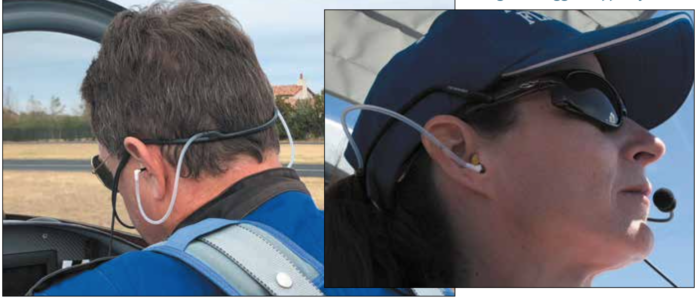In a connected world with everyone wearing earbuds, it’s logical to consider an in-ear headset for the cockpit. Although they aren’t for everyone, if you haven’t tried them, you should. While flagship ANR models from Bose and Lightspeed deliver big on comfort and performance, we’ve long appreciated the freedom and decent audio quality from a Clarity Aloft in-ear model that’s served us (and plenty of other users we surveyed) we’ll for years.
So when Card Machine Works—a relatively new company that’s quietly been designing the CQ in-ear headset—sent us its latest Bluetooth-equipped headset, we jumped at the chance of putting it head-to-head with the long-proven Clarity Aloft Link. Herewith are our observations.

BLUETOOTH, OF COURSE
In our view, no aviation headset is complete without basic Bluetooth functionality. While you may not listen to your favorite tunes while flying, the truth is that the most popular nav apps, including ForeFlight, FlyQ and Garmin Pilot, have useful audio outputs that are best served with either a Bluetooth-equipped audio panel or an aviation headset with Bluetooth connectivity. And even if you do have a Bluetooth audio panel, you might want to connect the tablet app (or panel avionics in some cases) audio directly to your own headset so the passengers don’t hear startling traffic and terrain warnings.
When we reviewed the Card Machine Works original $425 CQ1 headset for a report in the November 2021 issue of Aviation Consumer, we wished it had Bluetooth, and thought that buyers would demand it, at least as an option. The company came through on its promises and delivered just that with a Bluetooth model that starts at $675.
Contrast these models with the non-Bluetooth $525 Clarity Aloft Classic and the Bluetooth-equipped Clarity Link, priced at $795. Yes, wireless connectivity comes at a sizable price premium.
CLARITY SETS A STANDARD
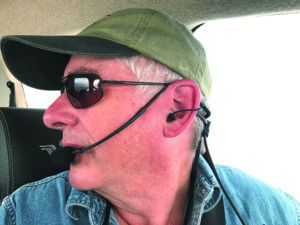
Hardly a newcomer to the in-ear headset market, and after years of our own use in a wide variety of aircraft, we think Clarity sets the standard in durability and overall comfort. It works with ballcaps and eyeglasses. We’ve yet to break one.
Weighing just shy of 2 ounces, the Clarity Link (which weighs the same as the others in the Aloft lineup) is a touch lighter than the CQ, but it doesn’t really feel like it. Still, out of all the sets we evaluated, we always thought it felt the most durable. The hardware—including the headband and attached microphone boom—have a high-end feel. That’s important in an in-ear model. These things are fairly minimal and low profile, and easy to sit on when you don’t realize they are on the seat. The CQ headband on our demo set is wrapped in an orange Kevlar sheathing, making it easier to spot in the aircraft and in the flight bag. Both the CQ and Clarity come with high-quality storage cases. Use them.
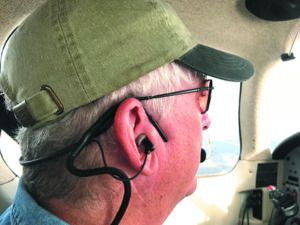
In-ear models generally won’t provide the noise protection you want in noisy environments, including open cockpits and radial-engine aircraft. But for the typical piston single and twin—and turbines—the Clarity works well, with impressive audio quality and noise attenuation. Aloft says you can expect between a 29- to 47-dB noise reduction within the 125 to 8000 Hz frequency spectrum—that’s nearly as effective as higher-end ANR models.
The Clarity is worn over the ears and the band rests behind the head. There is some flex in the band to adjust it for a more precise fit, while the microphone always seems to stay in just the right position over the lips without dropping or moving out of the way.
All Clarity models come with what Aloft calls Comply Canal Tips. These foam tips come in small, medium and large and screw onto threaded posts of the set’s speakers. Aloft advises that you may need different size tips for each ear, and that’s been our experience. Some passengers and pilots who have tried the Clarity during previous evaluations needed a small tip in the left ear and a medium one in the right.
With any in-ear set, you’ll want to experiment because if you don’t get a full seal, performance will indeed suffer. Plus, you have to properly insert the tips and that may not be easy, although these Comply Canal Tips work better than some of the higher-end buds we use for motorcycling and shooting. Aloft instructs you to compress the foam by pinching it down, as opposed to rolling it. That can cause the tips to unscrew from the threaded posts, stress the audio wires and also risk lodging the tip in the ear. The average canal tip lifespan when used daily can be up to three months, but our waxy ears make them nasty and in need of changing pretty frequently.
The Clarity Link has a 4.2-ounce detachable Bluetooth module (called BluLink) for wireless music, telephone and tablet/app audio input. Aloft doesn’t build the BluLink module, which runs on two AA batteries, but instead sources it from Pilot-USA. While the BluLink module has intuitive controls and a high-end feel, we frequently wish it had an extension cable for more storage options in the cockpit. You don’t have to use the module with the headset. The BluLink has two quick-connect attachment points: One side connects with the volume control box and the other connects directly with the headset. We’ve found that battery life is around 15 hours, but endurance depends greatly on Bluetooth use. We like the automatic shutoff after 30 minutes when it senses there is no Bluetooth connection.
Compared to the utilitarian module on the CQ Bluetooth, the Clarity BluLink is feature rich. Audio input quality is outstanding. BluLink uses Digital Signal Processing (DSP) and audio gain and depth will keep audiophiles happy. Better yet, volume keys allow you to control the audio level separate from the main Bluetooth source. When jamming along to tunes on the fly, you can advance or rewind through the song playlist with dedicated keys on the module, and answer the connected telephone with the dedicated telephone key.
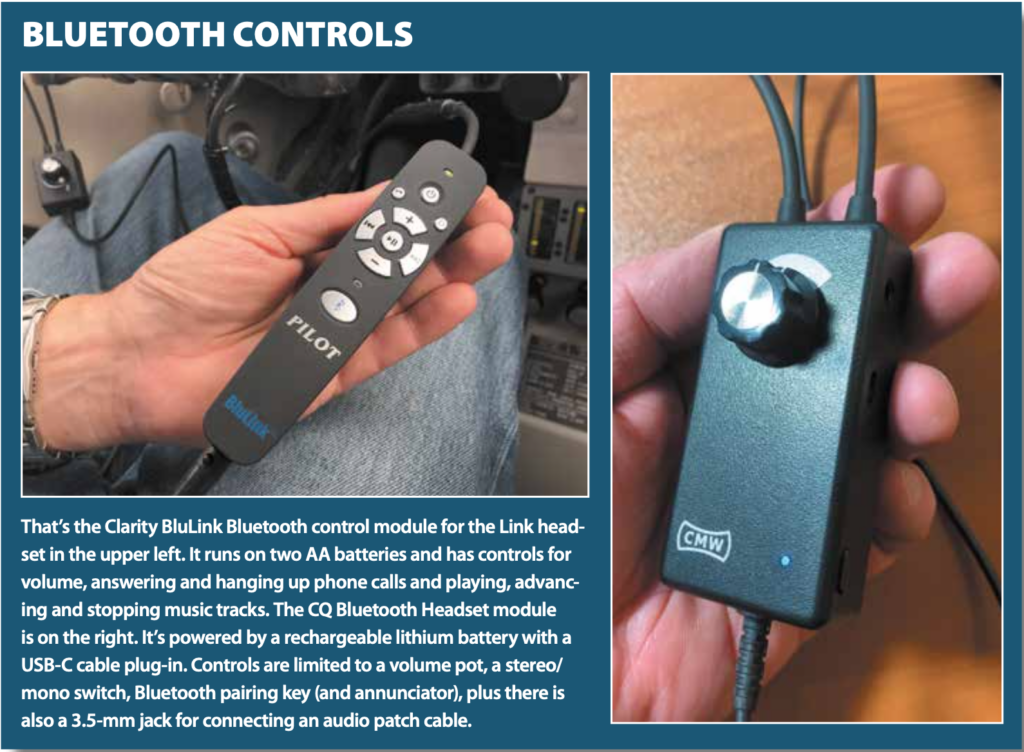
CQ BLUETOOTH HEADSET
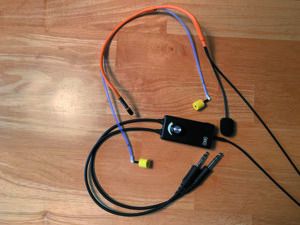
As we previously noted in the report on the first-gen CQ1 (a non-Bluetooth model), the folks at Texas-based Card Machine Works—who are active pilots—have extensive experience using both the Halo and the Clarity Aloft in-ear models, and specifically targeted the issues they felt needed improving when designing the CQ series. This includes microphone boom length (we think it’s good on Clarity and not the best on the Halo models we’ve tried for previous reports) and a wide microphone gain adjustment accessed with an internal trim pot.

Unlike the design of the Clarity, which uses thin audio wires for delivering sound, the CQ Bluetooth uses audio tubes. The tubes may seem fragile, but they aren’t. They firmly connect to the frame and speakers and you have to try hard to get them to come apart.
The benefit of the precision-tuned tube/speaker network is that there are no wires attached to the ear tips, so they won’t get damaged when rolling the tips for the proper ear insertion. The company says that the audio output drivers used in the circuitry are some of the smallest available.
Like the Clarity, the CQ is passive, and doesn’t need batteries except the one that powers the Bluetooth
We think the overall fit and build quality of the CQ Bluetooth model is good, and the set is designed so that it’s easy to rebend the portion of the band that wraps around the back of the head to accommodate individual wearers. We slapped the set on a few different heads and all were a good fit. Remember, in-ear headsets are designed for freedom. With the CQ, there is no large band over the top of the head, allowing for more headroom than a traditional headset. Taller pilots and those wearing headsets in snug cabins understand the value. “We’re pilots and know the value of not having stuff on top of your head when you get in real turbulence or a snug high-performance cockpit,” the company says.
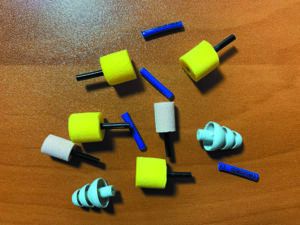
The CQ ships with a variety of ear tips, but the company encourages users to try different ones—even your favorite pair of disposable buds. When choosing buds, it says to consider noise attenuation, the foam recovery rate and of course, comfort. A foam tip needs to be rolled into a shape that is smaller than its normal relaxed state and inserted into the ear canal, where it expands and creates a positive seal. As we learned using tips for other applications, if the foam is such that it rebounds or recovers to its original shape too quickly, you will not have sufficient time to accomplish proper placement in the ear canal.
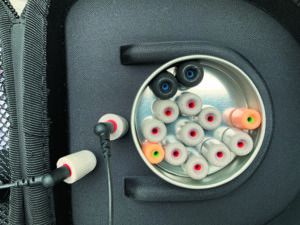
Keep in mind that any tip’s effectiveness is significantly decreased as they get dirty. The standard yellow tips (six are supplied with the CQ) will last about 20 hours for most, or less if those hours are flown far apart. For those who produce a lot of wax, that may be as low as 10 hours. Premium ear tips with better foam can last up to 50 hours. The set also comes with two triple-flange silicone ear tips and two smaller tips. Card Machine Works advises to not use molded ear plugs because they may not provide as good of a seal as foam ones.
The CQ’s Bluetooth function couldn’t be more straightforward. It has a basic battery charging annunciator (red when it’s charging) and the set annunciates “battery low” when it’s time for a recharge. It tops off quick, too—reaching 80 percent of a charge within the first 30 minutes. If the aircraft has stereo audio jacks, you can switch the set to stereo mode, but keeping the set in mono or stereo has no effect on the Bluetooth (or auxiliary wired) audio inputs.
Pairing the set to a late-model iPhone was a snap. Hold the pairing button for six seconds and you hear a pairing voice prompt, and the blue annunciator on the control box flashes periodically to let you it’s connected. Bluetooth audio quality is quite good. It’s not quite as good as we’re accustomed to with Bose action sport buds or Apple AirPod Pro buds, but it’s certainly acceptable.
But we wish the set had a dedicated music volume control. It’s not a huge deal, but you have to adjust the audio level directly from the source. If you’re connected to a cockpit tablet, chances are it will be right at hand, but maybe not if you’re connected to a smartphone. You can answer and hang up a call using the module’s multifunction button.
The CQ Bluetooth does have an auto-mute feature. By default, streaming media won’t be muted during radio communications, but you toggle it on by double-clicking the multifunction button on the side of the module. Now any radio or intercom chatter will trigger the Bluetooth audio stream to mute and automatically resume when it’s quiet again.
Worth mentioning is that for full duplex telephone calls, the CQ headset must be connected to an aircraft audio panel or intercom that is providing microphone bias voltage. You can listen to tunes with the set unplugged from the jacks, but you can’t talk.
CLOSE CALL
For audio quality (including mic audio), fit, finish, comfort and rugged construction, we think the CQ Bluetooth and Clarity Link in-ear headsets are closely matched. At $675 with GA plugs (and $725 for 6-pin LEMO plug for panel power/audio) the CQ is a high-end headset and carries itself as such. It has a 30-day money-back guarantee (less shipping, and as long as it’s returned in like-new condition) so you can try it out. Replacement tubes, elbows, tips and mic covers can be purchased for a nominal fee.
At $795, the Clarity Link is priced at a premium. But, for some it might be worth the extra money for the advanced functions on the BluLink module. We say try them both if you have the chance.
Last, we didn’t include the $389 Faro Air and the $359 Quiet Technologies Halo in this direct shootout because they don’t have Bluetooth. There’s also the $995 Bose ProFlight2, but this model is aimed at jet cockpits and not a fit for pistons—making the almost equally matched CQ Bluetooth and Clarity even more versatile. What hangs in the balance is the CQ’s long-term reliability and durability—something the Clarity has proven.
Link to both at www.cqheadset.com and www.clarityaloft.com.

